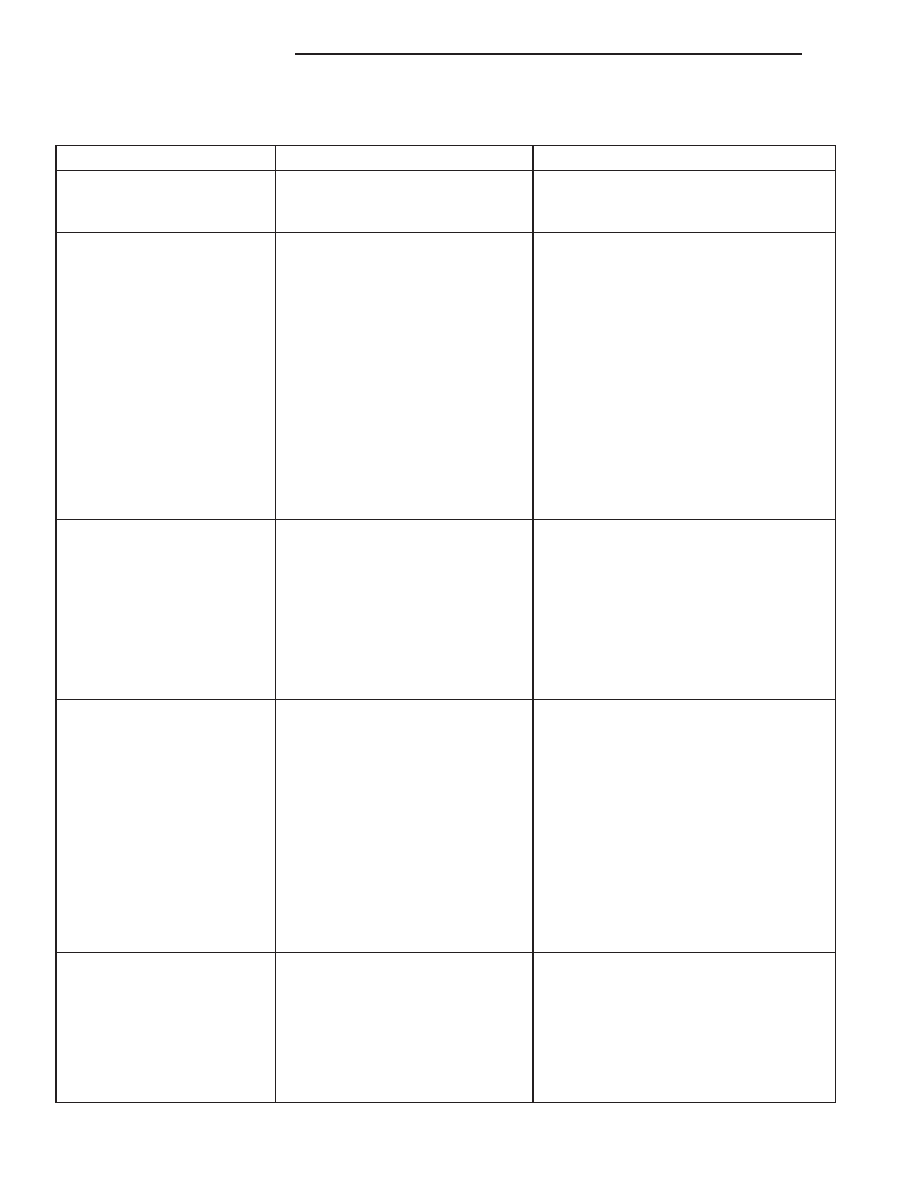Dodge Durango (DN). Manual - part 229

DIAGNOSTIC CHART
Condition
Possible Causes
Correction
Wheel Noise
1. Wheel loose.
1. Tighten loose nuts.
2. Faulty, brinelled wheel bearing.
2. Replace bearing.
Axle Shaft Noise
1. Misaligned axle tube.
1. Inspect axle tube alignment. Correct as
necessary.
2. Bent or sprung axle shaft.
2. Inspect and correct as necessary.
3. End-play in pinion bearings.
3. Refer to pinion pre-load information and
correct as necessary.
4. Excessive gear backlash
between the ring gear and pinion.
4. Check adjustment of the ring gear and
pinion backlash. Correct as necessary.
5. Improper adjustment of pinion
gear bearings.
5. Adjust the pinion bearings pre-load.
6. Loose pinion companion flange
nut.
6. Tighten the pinion companion flange
nut.
7. Scuffed gear tooth contact
surfaces.
7. Inspect and replace as necessary.
Axle Shaft Broke
1. Misaligned axle tube.
1. Replace the broken shaft after
correcting tube mis-alignment.
2 Vehicle overloaded.
2. Replace broken shaft and avoid
excessive weight on vehicle.
3. Erratic clutch operation.
3. Replace broken shaft and avoid or
correct erratic clutch operation.
4. Grabbing clutch.
4. Replace broken shaft and inspect and
repair clutch as necessary.
Differential Cracked
1. Improper adjustment of the
differential bearings.
1. Replace case and inspect gears and
bearings for further damage. Set
differential bearing pre-load properly.
2. Excessive ring gear backlash.
2. Replace case and inspect gears and
bearings for further damage. Set ring gear
backlash properly.
3. Vehicle overloaded.
3. Replace case and inspect gears and
bearings for further damage. Avoid
excessive vehicle weight.
4. Erratic clutch operation.
4. Replace case and inspect gears and
bearings for further damage. Avoid erratic
use of clutch.
Differential Gears Scored
1. Insufficient lubrication.
1. Replace scored gears. Fill differential
with the correct fluid type and quantity.
2. Improper grade of lubricant.
2. Replace scored gears. Fill differential
with the correct fluid type and quantity.
3. Excessive spinning of one
wheel/tire.
3. Replace scored gears. Inspect all
gears, pinion bores, and shaft for damage.
Service as necessary.
3 - 66
8 1/4 AND 9 1/4 AXLE
DN
DIAGNOSIS AND TESTING (Continued)